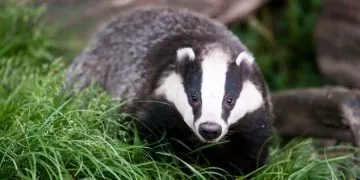Kangaroos are an icon of Australia! These adorable hoppy creatures make up a large amount of Australia’s animal population.
There’s a lot that people don’t know about kangaroos, so we put together the best 15 facts about kangaroos!
Kangaroos don’t emit much methane.

Scientists have identified a special type of bacterium in the stomachs of kangaroos that process their food without producing methane.
This result is not only good for the environment, but it’s more efficient for the kangaroos to process their food.
Researchers hope to study these bacteria to try to implement it in farm animals, like cows, in order to reduce the amount of methane harming the environment.
Kangaroos can flex.
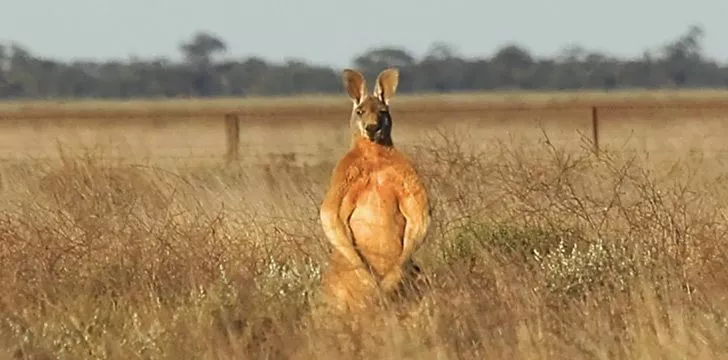
It’s not just human guys that flex to impress the ladies; male kangaroos do it too!
Male kangaroos use their arms to fend off rival mates.
The kangaroos with larger biceps and showed them off were more often chosen by the female kangaroos.
If kangaroos are chased, they run to water.

Although kangaroos don’t have many predators, they can sometimes be attacked by humans or dingoes.
As a defense, kangaroos often lead the pursuer into water. Once there, the kangaroo will try to drown the attacker.
Otherwise, the kangaroo will back against a tree and kick – this has enough force to kill a human.
Kangaroos hop because they have to.

You always see kangaroos hopping around because they can’t move their legs independently.
The structure of their legs renders them incapable of using them to walk.
Fortunately, it seems they really wouldn’t need to, seeing as they can hop at speeds of over 35 miles per hour!
Female kangaroos can pause a pregnancy.
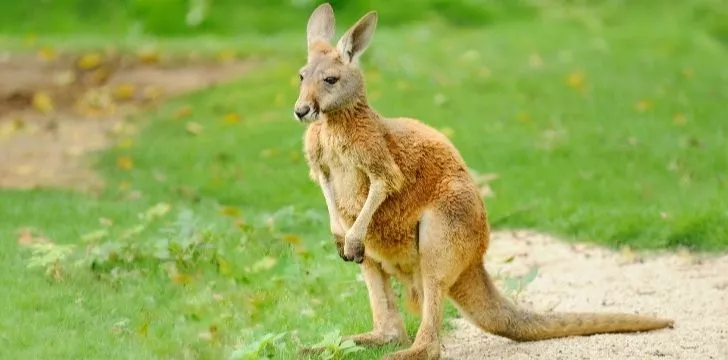
The reason the kangaroo population is so high is that female kangaroos are pretty much constantly pregnant.
After a newborn joey reaches the pouch, the female will get pregnant again.
However, she can freeze the embryo development until the current joey is able to leave the pouch!
Once it leaves, she resumes her pregnancy, and the cycle repeats.
Most kangaroos are left-handed.
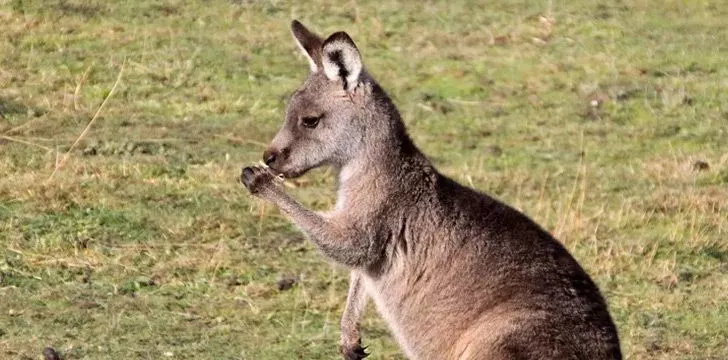
While it’s often thought that humans are the only species that have a dominant hand, kangaroos do as well!
Wild kangaroos gravitate to using their left hand for tasks like grooming and feeding.
Australia has more kangaroos than humans.
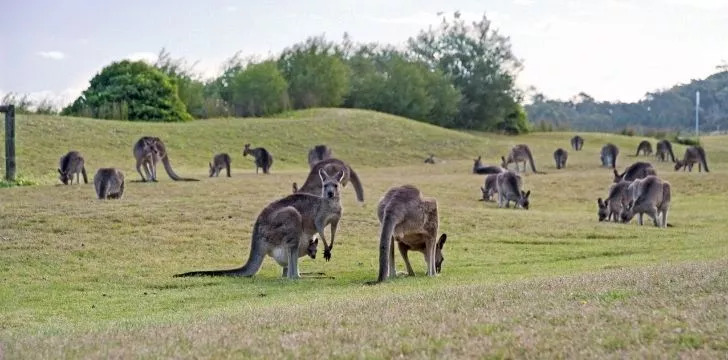
In comparison to the 24 million people living in Australia, there are 44 million kangaroos as of 2015.
That’s quite a leap from 2009, when there were only 27 million kangaroos!
The overpopulation of kangaroos leads to our next fact.
Kangaroo meat is common to Australians.
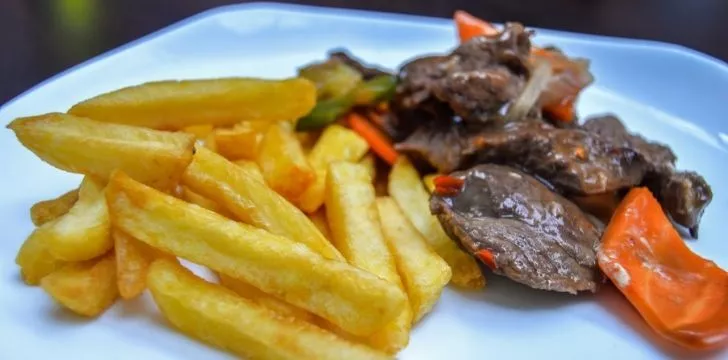
It’s not unusual to find a “kangaroo burger” on a menu in Australia!
In fact, it is a healthier option as it is high in protein and low in fat, as well as a more sustainable alternative to other meat.
Because the kangaroo population is so high, it’s not a threat to their existence.
Kangaroos are hit by cars all the time.

In fact, 80% of animals hit by cars in Australia are kangaroos.
The majority of rental car insurance policies don’t cover you if you drive in the Outback when it’s dark because the chances of hitting a kangaroo are so high.
Many people who live in the country have metal “roo” bars to decrease the impact of hitting a kangaroo.
There’s a species of kangaroos that live in trees.
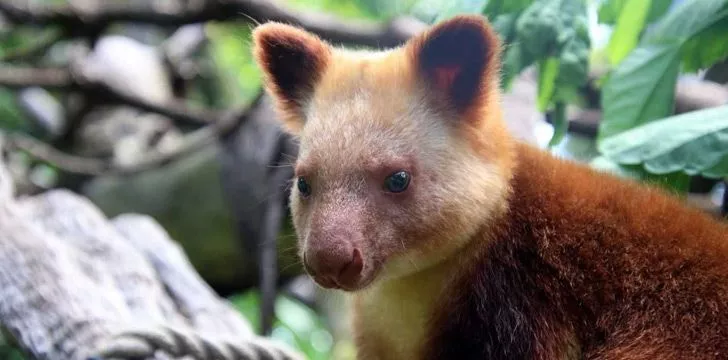
If you saw these kangaroos, you wouldn’t think they were kangaroos! Unlike the kangaroos we think of, tree kangaroos walk on all fours and don’t hop.
Not only that, but they’re native to New Guinea and only far northeastern Queensland, unlike the majority of kangaroos that are native to Australia in general.
Sadly, this rare species’ population is on the decline due to deforestation and hunting.
The tails of kangaroos act like a third leg.
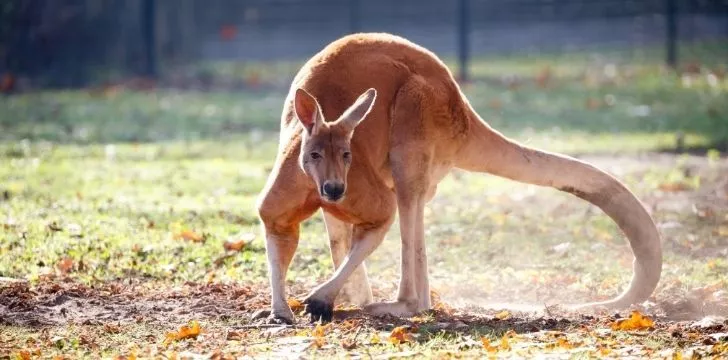
Not only do kangaroos use their tail for balance, but it’s also like an extra leg.
They have a unique “walk” in which they push off the ground with their tail, followed by jumping with their legs.
The force of their tail is the equivalent power as their legs combined.
Kangaroos don’t sweat.

Since kangaroos don’t have sweat glands, they tend to hang out and relax in shaded areas when it’s hot out.
If they really want to cool down, they will lick their forearms until their fur is soaked.
They will also lick their paws and rub the moisture on their chest!
Kangaroos can’t move backwards.

Because of how huge and muscular their tail is, kangaroos can’t jump backwards.
Australia took this as an inspiration for its coat of arms, featuring a kangaroo and an emu.
Both are animals that can’t move backward, which symbolizes the nation only moving forward. Inspiring!
Kangaroos have a lot of different names.

Male kangaroos are called boomers, female kangaroos are called flyers, and of course, baby kangaroos are joeys.
If there’s a group of kangaroos, they can be referred to either as a mob, a troop, or a court.
Since kangaroos are very social animals, they are almost always in a group, sometimes as small as 3 or 4, sometimes as large as 100!
Newborn joeys are the size of a lima bean.
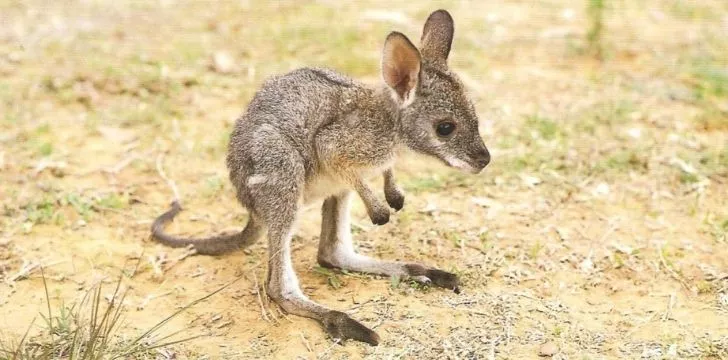
As the gestation period for kangaroos is incredibly short (only 33 days!), joeys are tiny when they emerge.
They stay in the pouch where they grow for 4 months, at which point they leave the pouch for short periods of time.
At 10 months is when they finally leave the pouch for good!
Kangaroos live in the southern hemisphere on the land of Australia, and their population far outweighs that of people.
Kangaroos are way more clever than we realize… they’re left-handed, and they can even pause a pregnancy.
Kangaroos can’t move backward, but that’s okay, as they are always moving forward and never look back.




